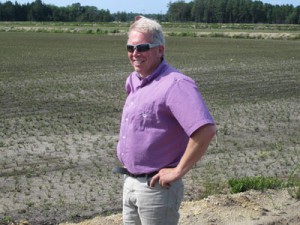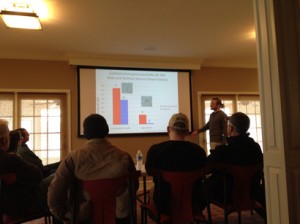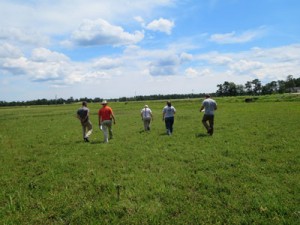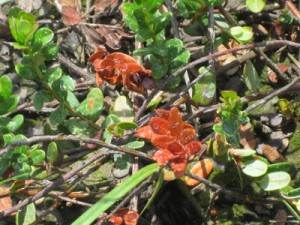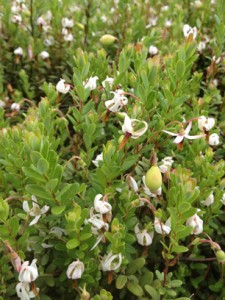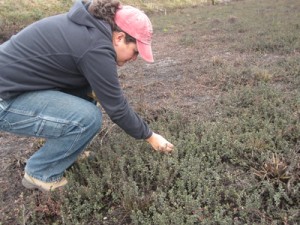Last week, one of Pine Island’s closest collaborators, Dr. Peter Oudemans, was promoted by Rutgers University to the rank of full Professor. His research with the Philip E. Marucci Center for Blueberry and Cranberry Research has been tremendously beneficial to the cranberry industry.
A great deal of his work with Pine Island and other growers includes the persistent problem of fairy ring. “We’re starting to get more answers,” Peter says, “and we also have better technology to get the answers. We also have Tim’s, and now Josh’s, research on the floral component and how to better control disease.”
PIICM manager Cristina Tassone has high praise for all of the researchers who work with the industry. “Working with the scientists and researchers at the Rutgers Research Extension is invaluable to us,” she says. “We have a unique opportunity, due to our proximity and our size, to work closely with them and provide areas on our farm for larger experiments. Being able to collaborate in this way, and share resources, helps not only us, but the cranberry industry as well. Peter’s experiment with Fairy Ring treatment is making progress, and he has started using a drone to monitor the experiment area. He also has a graduate student working on one of our bogs gathering data on footprinting (which is another issue for all growers, specifically in the Stevens variety). Cesar Rodriguez-Saona and Dan Schiffhauer are also helpful with any and all pest questions we may have, and Dan comes to the farm every Friday to walk the bogs with us to help with fertilizer decisions and to check up on the findings of our scouting program.”
The relationship goes both ways: “I’ve learned a large number of life lessons from growers,” says Peter. “Working with the people in this area has been phenomenal.”

